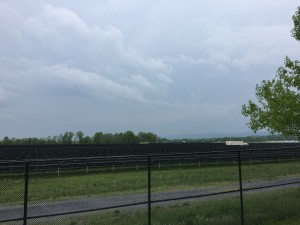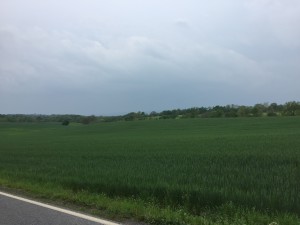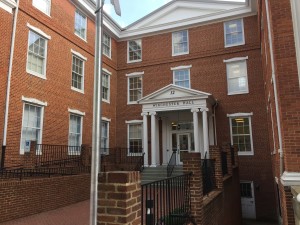By: Tim Sylvia
Amidst growing concerns that President Trump and his administration will undo and reverse the renewable energy progress made by previous administrations, it appears that the county’s move towards renewable energy will will remain unchanged.
On March 16, the Trump administration released a proposed budget that would cut funding for the Environmental Protection Agency by 31 percent and the Department of Energy by 6 percent. The President also signed an executive order on March 28, aimed at creating jobs by expanding energy extraction on public lands and reviewing and potentially removing the Obama administration’s Clean Power Plan.
According to an EPA fact sheet, the Clean Power Plan aims to reduce the carbon emissions of American power plants by 32 percent of their 2005 level by 2030. The executive order has been promoted under the argument that it will bring American jobs back to the energy sector by reducing regulation on non-renewable energy, namely coal.
Trump has stressed his belief on the importance of coal since his campaign. While his opinion on renewable energy has flipped multiple times, he has been verbal in his belief that renewable energy is most effective as an accessory to non-renewable energy. He has expressed his interest in reviving to coal industry to create jobs.
While the price of solar panels has dropped, solar energy’s affordability comes from the 30 percent tax credit that residential and commercial properties with solar systems receive. This credit is in place until 2021, but the president’s proposed deregulation of the coal industry could make it a much more economically viable option than solar.

Solar energy has found a home in Frederick County. The county is home to the Mount St. Mary’s solar farm, the second largest in the state. Last January, Coronal Development Services requested a special exception from the Frederick County Board of Appeals to establish an even larger solar farm in Keymar, which would rival the state’s largest, located in Hagerstown
The project is a state necessity, according to Coronal’s site application, which reads: “Maryland has established one of the most aggressive renewable portfolio standard goals in the country, aiming for 20% of its power to be renewable by 2022, including 2% from solar. In order to meet these goals Maryland needs not only small, residential rooftop installations, but large utility-scale facilities like the LeGore Bridge Solar Center.”
In September, the Frederick County Office of Sustainability and Environmental Resources announced the Frederick County Solar Co-op, a partnership between the Sustainability Office

and Maryland Solar United Neighbors. The project would allow members to buy into a contractual solar agreement with an installer. This would provide cheaper installation at a group rate.
According to Shannon Moore, manager of the Sustainability Office, the co-op has over 75 participants currently. There have been struggles, some of which have come with the fluctuation of the renewable energy economy.
“The market has been flooded with new solar projects, so the supply has exceeded the demand,” Moore said.
This inflation is in the PPA market. Solar companies have to reach a certain number of environmental credits each year. A PPA is when a solar company purchases the solar unit on a person’s roof, that person pays a flat electricity rate, and the company counts that person’s roof towards their environmental credits. With the amount of houses going solar, the market has been flooded.

“The price of renewable energy credits is so low, nobody is making PPA offerings right now,” Moore said. “It’s a good problem to have, in a way.”
On March 21, Frederick County council member M.C. Keegan-Ayer sponsored a bill that would allow solar collection systems to be installed on the roof and or walls of structures in agriculturally zoned lands. These fixtures would be considered to be in “floating zones” as solar collection units are not currently permitted on agriculturally zoned land.
“A commitment to renewable energy for the county is the future,” said Ayer. “If we don’t make a commitment now and make sure there is a way for Frederick County to be part of that wave, we are doing a huge disservice to our citizens.”
While this commitment to the future of energy is in place, the reason Frederick is so attractive for solar companies is due to the large amounts of open farmland in the county. The problem comes with finding an even split between the two.
“I think solar is really the way for Frederick County to go,” said Ayer “The problem is, you have to balance the need for embracing green energy, along with protecting our agricultural heritage and protecting our prime farmland.”
Both Ayer and Moore are proud of the progress that the county has made with the move towards renewable energy, but recognize that there is more to be done.
“We’re making an effort. I don’t think we’re doing quite as well as some places,” said Ayer.
“The county has some pretty big goals,” Moore said.
One of the county’s largest goals is its Comprehensive Energy Plan. This plan has the goal of reducing the County government’s use of non-renewable energy at least 50 percent by 2025. The plans aims at reducing emissions from county office buildings, facilities and vehicles. Moore’s Sustainability office oversees this plan and evaluates its effectiveness.
Frederick County is poised in its commitment to the production and use of renewable energy. This commitment reaches beyond the influence that the Federal Government has on energy in the county.